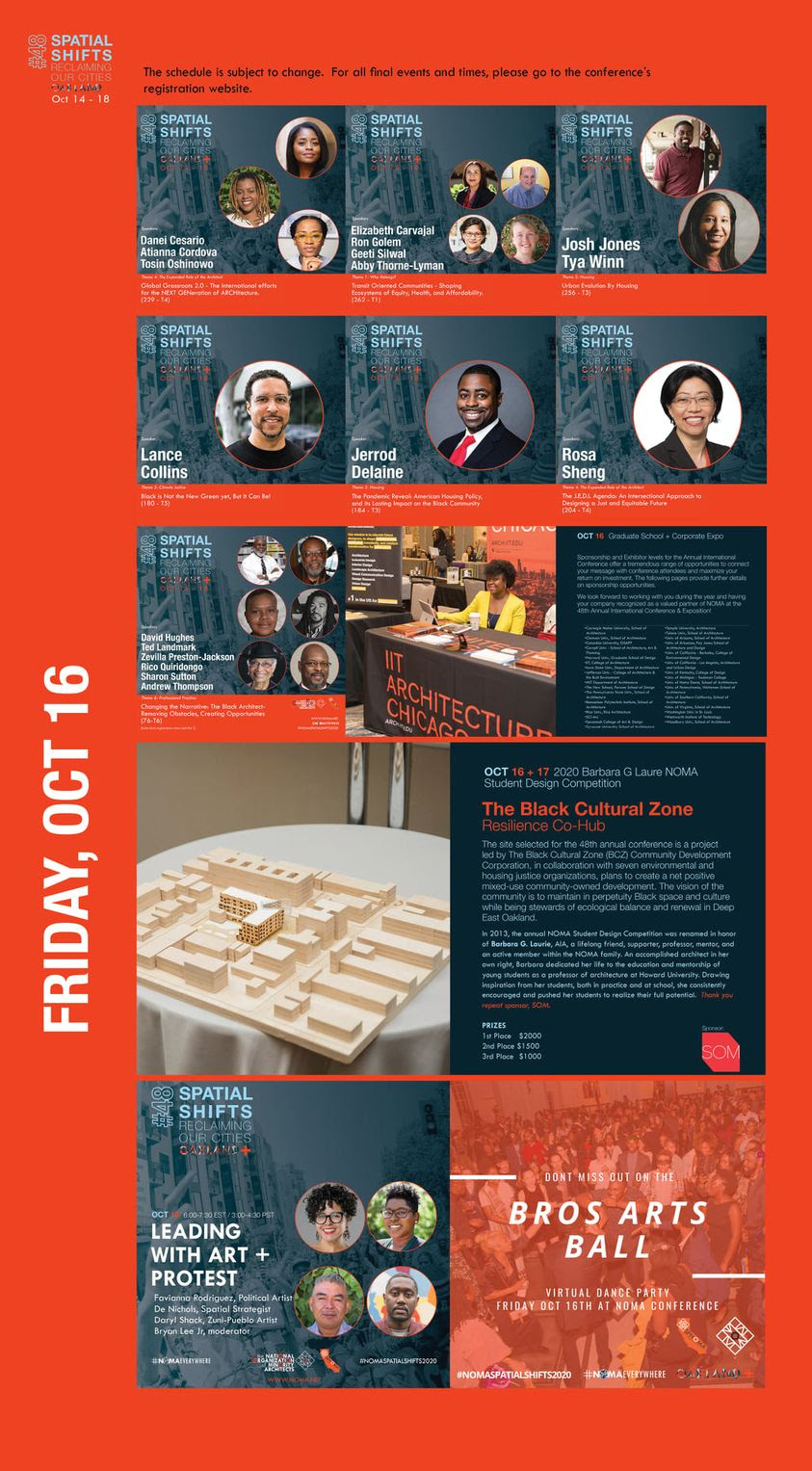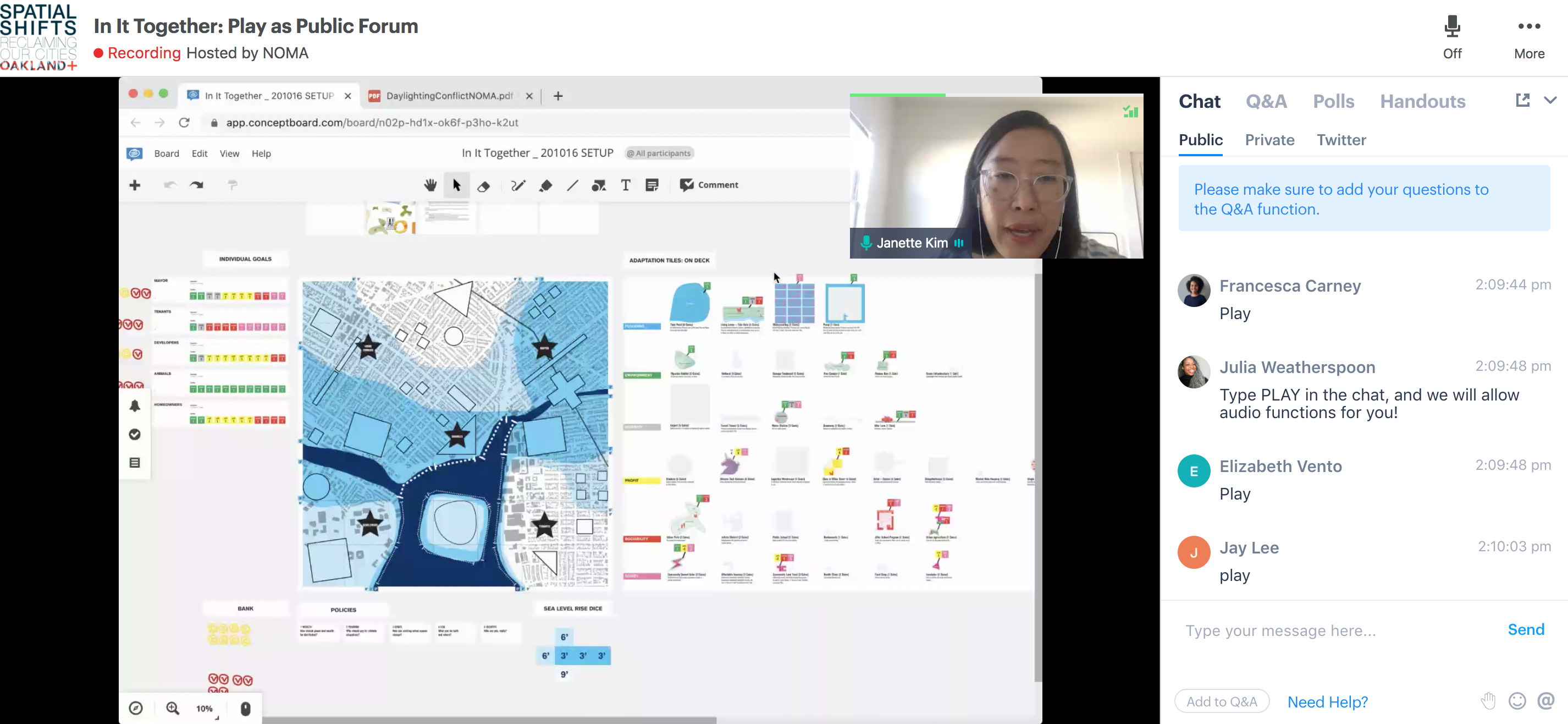At this year’s opening keynote for the annual conference of the National Organization of Minority Architects (NOMA), designer and urbanist Liz Ogbu acknowledged that a much-needed national conversation on racial justice was finally taking place. But she added, “We are working against the clock.” Was racial equity just the latest trend, she asked, or would the current momentum translate into meaningful change in the architecture field and beyond?
While this year’s conference organizers could not have predicted the spread of COVID-19 or the Black Lives Matter protests that would erupt across the country, they were already busy planning a conference that would foreground the issues headlining the news. Tya Winn, the national conference advisor on the NOMA board and Habitat for Humanity Philadelphia’s director of project planning, observed that this year’s proposals were far more focused on diversity and equity than in previous years. “We always have a high number, but this year I think I could count the ones that did not come from that lens on one hand,” she told AN.
The 48th NOMA conference, “Spatial Shifts: Reclaiming Our Cities,” which took place October 14 through 18, offered more than 40 seminars and workshops that showcased housing and community development models, environmental justice initiatives, and cultural preservation cases from Portland to Puerto Rico. Seminars introduced alternative firm models like worker-owned cooperatives, while firms like HOK and Moody Nolan presented their firms’ plans to increase diversity and equity in their practices. Other panels were directed at transforming design pedagogy and the profession itself, with collectives like Design as Protest and Dark Matter University presenting anti-racist educational and professional models, and Equity X Design founder Rosa Sheng presenting a J.E.D.I (Justice Equity Diversity Inclusion) agenda for the industry. Other sessions, such as ”How to Start a Revolution in Your Architecture School,” offered space for students to present ways to address institutional racism in their schools.

Although the entire conference took place online, the host city of Oakland remained an important touchstone. Earlier in the year, when the seriousness of the COVID-19 pandemic began to settle in, there were some who called for canceling the conference altogether. But June Grant, president of the SF NOMA chapter and founder of blink!LAB architecture, insisted on holding it digitally. As she explained, “My desire was to shift the focus from those who know about the conference to have it be a global conversation.”
The shift to digital did indeed make the conference more accessible, and translated to record-breaking attendance of 1,700+ participants, according to Jason Pugh, incoming NOMA president and an associate at Gensler. Digital “chat lounges” took participants through Chinatown, Fruitvale, and East and West Oakland, while panels looked at cultural districts and affordable housing projects in the Bay Area. Kimberly Dowdell, the 2019-2020 NOMA president and a principal at HOK, told AN that she had selected Oakland as well as Brooklyn, last year’s conference site, because both cities had significant populations of Black and POC communities that were facing extreme gentrification pressure.
“I wanted to confront the notion of planning to stay,” explained Dowdell. Janette Kim, an architectural designer and an assistant professor at California College of the Arts, who presented a live demonstration of her climate risk-centered board game, In It Together, during the conference, appreciated the grounding in the city. “Oakland has one of the most enriched, developed, and deeply systemic activist communities I can imagine,” she said, and, for her, NOMA reflected this activist landscape.

As many at the conference reiterated, the question remains: how will the architecture profession work with communities of color to address major inequities and build healthy, empowering spaces for them? As June Grant raised during the Thursday keynote, the popular narrative of spatial injustice focuses on redlining as a historical starting point for how the industry has marginalized Black and minority communities. However, she pointed out, “The timer started before redlining, before the maps. Planners and architects were not ready for that anger. That anger started long before the public meeting. There is no Band-Aid to cover up what our industry has done.”
Within the field itself, NOMA has long tried to remedy the serious lack of representation by Black and POC architects. How would the present grappling with race and its intersection with systemic injustice impact the field? Jason Pugh, the incoming NOMA president for 2021-2022, described a parallel to the green design and sustainability movement and how it has transformed the profession. “My hope is that 10, 20 years from now, similar to sustainability, that diversity, equity, and inclusion will be woven into the fabric of our practice and the work of the projects that we touch and the things that we do.”











